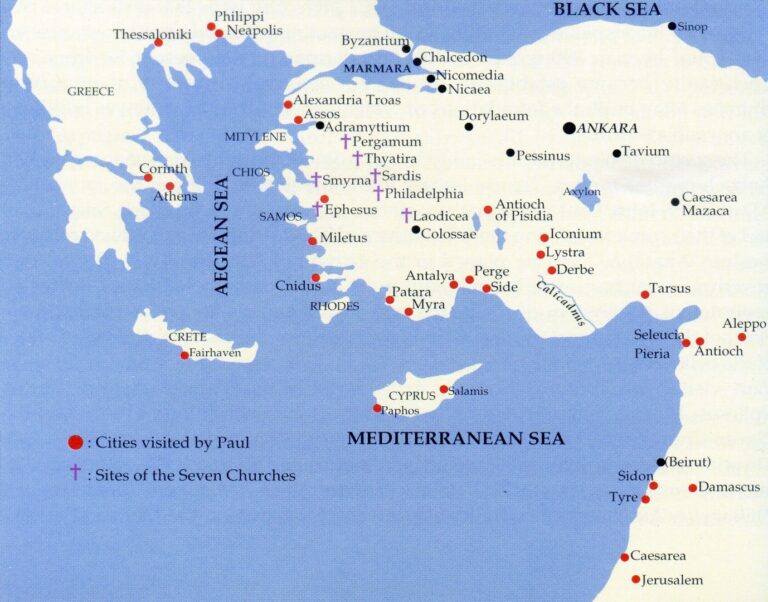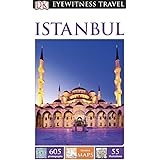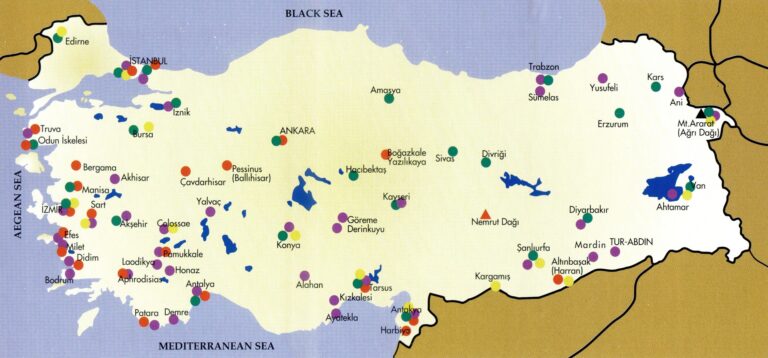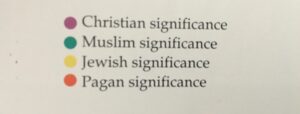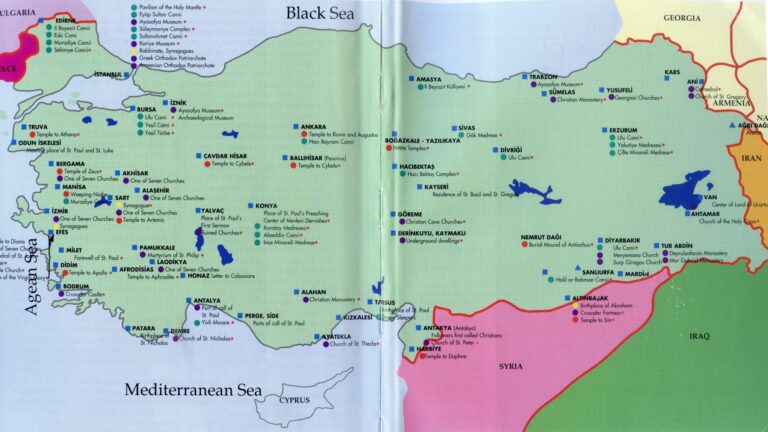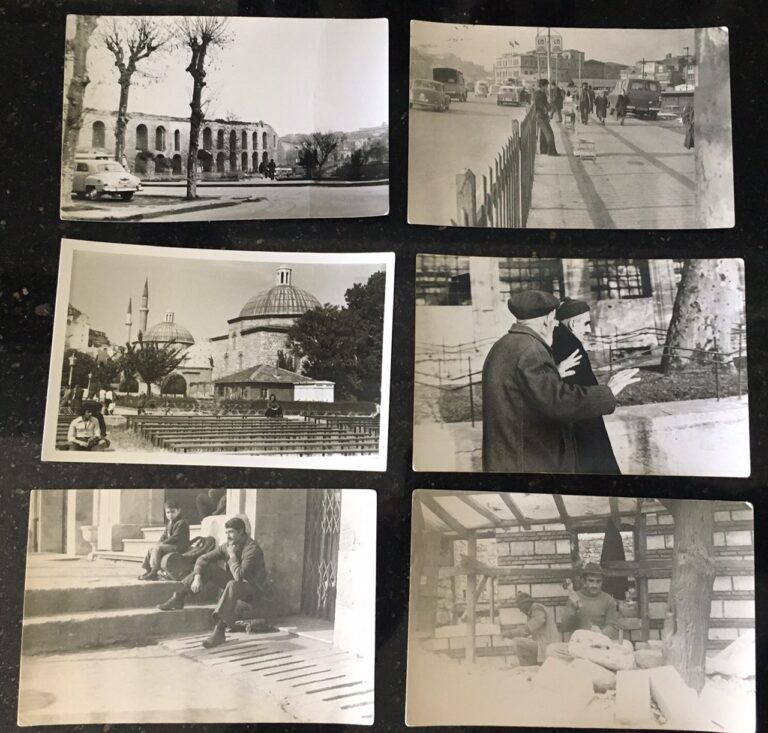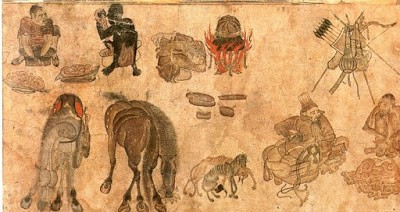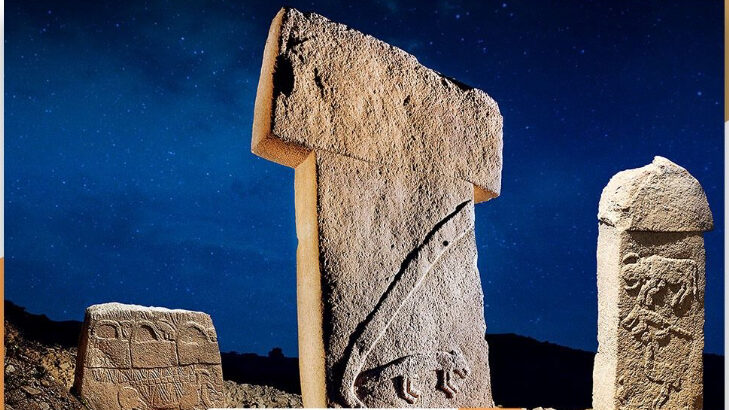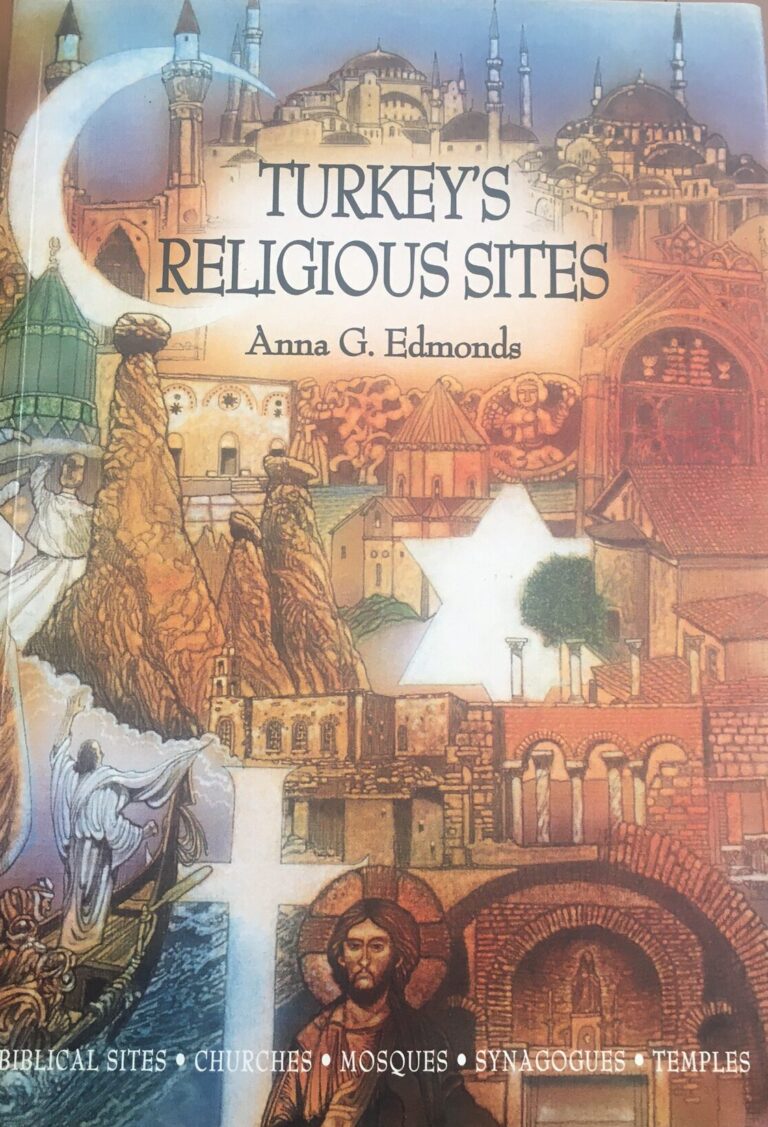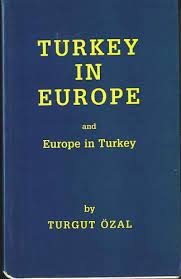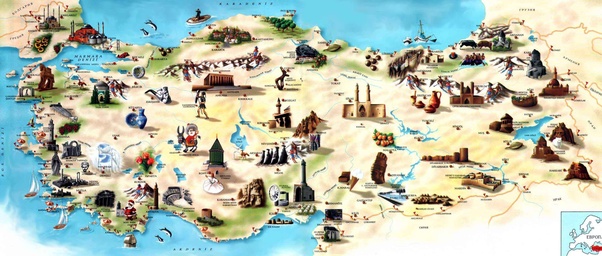The faith journey of the Turks, which started with the TENGR beliefs written on stone in the Yenisei and Orhun tribes of Asia, Buddhist paintings and temples in Dunhuang caves, Samarkand with wooden poles, Bukhara Mosques, Ahlat tombstones, Cappadocia underground churches in Anatolian geography, Göbeklitepe Temple, Karaim Synagogues, Karaman Orthodox Churches It has diversified and enriched with the ancient mythologies of Asia Minor, the Gods of Sumer, the Rumelia dervish lodges and lodges.
The religious beliefs of the Turks, which started with Tengrism (Göktanrı), met with the monotheistic religions after Manichaeism and Buddhism, and continued their beliefs in 7 religions.
In the 21st century, more than 35 Turkish tribes and communities dispersed in Asia and Europe maintain their beliefs in 5 religions:
Islam………………………17 heights
Christianity……………….11 heights
Shamanist …………………4 height
Buddhist ……………………3 height
Jewish…………………………2 height
Half of the 35 tribes preferred Islam, three quarters preferred Islam-Christianity, and Asian beliefs in the form of Shamanism-Buddhism were preferred by 20% of the tribes.
Tengri
The first word identified in Turkish is Tengri (God). It is seen that Turks have strong beliefs and the conceptual framework is ancient and strong.
The atheism would later jump to the Americas over the Yakut Turks.
The Turks have also transformed the belief world of the Chinese with their belief in the Gods of Heaven.
Islam and the Caliphate
Islam and the Caliphate, in the struggle of the Turks against their ancient enemies China and Iran; caused them to play galabe.
Northern Islam, that is, Hanafism, systematized by Abu Hanefi, one of the Khorasan Turks, constitutes 56% of Islam. Reason and Faith support each other. Sufi beliefs abolished sectarian discrimination, Bektashism formed the infrastructure of the Ottoman expansion in Europe.
Major Axes
• a significant Muslim Turkish population in China, Iran, Russia and Europe;
• Buddhist Turkish population in China and Russia
• There are Christian and Jewish Turkish populations in Russia and Eastern Europe.
Land of the Holy Land
Turkey, the land of the holy land: The Cult of the Mother Goddess Cybele, the House of the Virgin Mary, the Council of Iznik, the revival of Orthodoxy in Turkey, 7 holy churches, Hagia Sophia, Mimar Sinan Mosques, Madrasahs, Kulliyes, Prophet Abraham Urfa, Prophet Noah, The Legend of Noah The first Christians in the Underground Churches of , Harran, St. Paul, Antakya, Tarsus, Cappadocia, Göbeklitepe (8000 BC), Syriac, Aramean, Nestorian, Eastern Christianity are all faith journeys in our country.
Nile – Amudarya (Ceyhun) Nile river and Ceyhun (Amudarya);
When two parallel lines are drawn to the east, starting from the points of Alexandria on the Nile and El Luxor Wasit in the south; Alexandria, Memphis, Cairo, Damascus, Jerusalem, Harran (on the periphery) Jerusalem, Nineveh, Baghdad, Babylon, Basra (on the periphery), Uruk (on the periphery), Isfahan (on the periphery), Nishapur, Bukhara, Samarkand.
The Turks existed during the intercontinental cultural contacts that took place on the Nile-Amu Derya/Ceyhun axis, starting from the east from the tip of Samarkand to the west.
Main Station: Transoxiana Yellow River (Huang Ho) – Ceyhun or Orhun river – The distance between Ceyhun and Ceyhun – Nile are equal. The Turks made their journey to the West, which lasted for centuries, with the intermediate station Transoxiana (Ceyhun-Seyhun).
Axis of Hanafism In the early ages of Islam in the 700s, the wise Imam-i Azam Abu Hanifa from Khorasan, patient and realistic in the systematization of Islam, by taking steps that combine faith with reason, the largest sect of Islam in the future from the Balkans to India, to Bangladesh; A union of faith and heart has been created that will extend from Tatarstan to Egypt.
In India, from geographies other than Turkey and Turkistan, the Turkish Mughal Empire in India raised Islam to a rich civilization level in the subcontinent, and enlivened the city of Agra by the Yamuna river with the Taj Mahal. During the Ottoman period, Indian Lodges continued to exist in Istanbul.
Celestial Religions in the Ottoman Empire The Ottomans undertook the representation of all the monotheistic religions; He represented Islam with the Caliphate, Orthodoxy with the Istanbul Patriarchate, Judaism with the Chief Rabbinate, and Armenia with the Patriarchate.
Christianity has its roots in Palestine and Anatolia.
The Armenian, Assyrian and Greek Orthodox churches and beliefs of Eastern Christianity originate in Turkey.
It is Ottoman diplomacy that revealed Protestantism.
Catholic Croats, Armenians, Albanians, Poles, Hungarians, Greeks had positive relations with the Ottoman Empire. The Ottoman lands became the center of the independence struggles of Poland and Hungary.
Transoxiana/Turkistan Renaissance 700-1200
Between 700 and 1200, the Renaissance of the geography of Turkestan, centered in Transoxiana, began to live 600 years before Europe. Ulugh Turkestans were familiar with languages and religions. Turkistanis, who were acquainted with the religions and languages of Zoroastrianism, Manicheism, Buddhism, Nestorianism, Syriacism, Hinduism, Islam and Judaism, developed the line of Sufism from all this religious diversity and richness.
Karakhanids and Seljuks (Nizamülmülk, Nizamiye Madrasahs) brought the institution of Madrasa to Islamic Civilization.
In the climate of cultural expanse and interaction that spread from Transoxiana to Iran, to Khorasan, while Turks were publishing the codes of practice of Islam with Nizamülmülk and Gazzali, the Horasan Erens, like Hacı Bektaş-ı Veli, who emerged in the same geography, developed Sufism in a way that would be unique to the Turks.
Turkistan/Khorasan – Andalusia Synthesis
After Turkestan/Horasan Sufism, leaping to Anatolia and Rumelia, in addition to the Demir Baba/Sarı Saltuk/Yunus/Mevlana/Hacı Bektaş line, the struggle with Ibn Arabi, who migrated from Andalusia, will also take on an identity. The colonizer Dervishes will unite both continents with dervish lodges, lodges and dervish lodges. they will live the togetherness of being both enterprising and contemplative.
The Complete Civilization Line: MMM and the Genetics of Turks
Transoxiana, Mesopotamia and Menderes rivers; From the Nile to the Danube… From the Nile to Ceyhun, from Ceyhun to the Yamuna river; The rich cultural accumulation created by the alluvial soils of these geographies is embedded in the genetics of the Turks.
Anatolia, the refuge of believers; It has always been a land of mercy and emigration. Anatolia, which embraced the believers with the underground churches of Cappadocia, welcomed the Andalusian Jews in 1492 and the Muslim immigrants who were exiled from the Balkans and Caucasus in the 1800s.
Mimar Sinan, who prospered the Ottoman realms with 375 architectural works, 81 of which are mosques; He is an Anatolian believer and genius who adorned the geographies and lands of the Islamic Civilization with lights.
Taj Mahal Tomb built by the Mughal Turkish Empire to represent the Islamic Civilization on the banks of the Yamuna river in India, and the Selimiye Mosque built by Mimar Sinan during the Ottoman Empire around the Meriç River in Edirne; They compete with each other in the UNESCO World Heritage List.
Mosques of Samarkand, Bukhara, Kashgar; Istanbul’s Selatin Mosques, Hagia Sophia Church/Mosque, Caspian Synagogues, Rumeli Lodges are the clear manifestations of the Perfection in the Civilization Journeys of the Turks who have expressed their identities in various beliefs.

